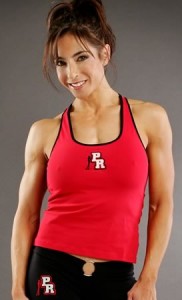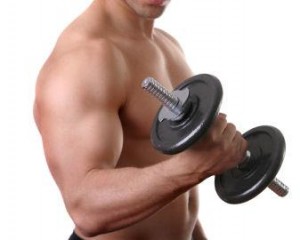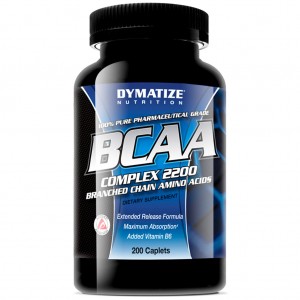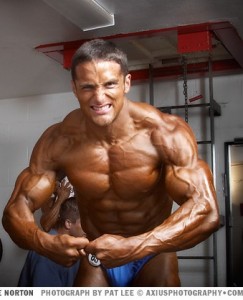 By: David Sandler, MS, CSCS*D, FNSCA
By: David Sandler, MS, CSCS*D, FNSCA
Date Published: Autumn 2009
Without a doubt, speed is instrumental in athletic success. You’ve all heard the saying that “Speed Kills”. The first thought is Usain Bolt (the current 100m and 200m World Record Holder) crushing speed records leaving everyone in the dust. But, while his sprinting is nothing short of amazing, to say the least, could he play other sports and benefit from that perfect running technique?
Just about every athletic program is adding speed work into their regular training. All too often however, coaches spend too much time working on detailed sprint mechanics of straight line speed, or “track-like” sprinting assuming that it will translate to on-field performance. Coaches forget about the need to teach the athlete to convert his or her speed to benefit their sport to help them chase down the soccer or tennis ball, or get into better position to make the tackle. Certainly running fast is important, especially if you break away from the pack but considering that nearly every sport requires short burst speed with multiple change of direction, and several different footwork patterns including shuffling, back-pedaling, and cutting, working on track sprint speed will limit overall gains.
While straight line speed mechanics are important, the strength coach/personal trainer should focus on turning basic speed into on-field or on-court speed. To do this effectively the coach needs to focus on footwork transitions and shifting from linear (running forward) movement to lateral movement (side to side) and back again. Linear drills refer to running forward and backward with movement mechanics focusing on the sagittal plane. Lateral drills refer to side to side movement in the frontal plane, while diagonal drills are the combination of both. But before laying out complex agility drills requiring rapid changes, the basic mechanics of lateral movement need to be perfected.
Speed has many components. Besides the basic mechanical movement patterns that focus on starting position, stride mechanics, leg turnover, and arm action, there are other factors such as leg and hip strength and torso, hip, and ankle rotational speed. Each of these factors, when controlled and properly trained, will improve overall sport speed.
Strength Before Speed?
The question often comes as to which should be trained first. If time permits (meaning you are far enough out of your competition period) then a good solid strength program lasting 4 to 8 weeks is essential for long term benefits. Strength will improve speed but only if it is properly cycled so that it can be converted. That means you need a progressive resistance program that works on increasing speed once a good strength goal has been reached. For example, rather then increasing strength of your 400lb squat, you should increase the speed at which your squats are performed looking to get your reps done in a shorter time. That will increase explosivity that will transfer to the playing surface once you engage in your sprint and agility training. In most cases however, since either training time is limited or the season is long, strength training is done with speed and agility work. They are separated, explosive speed and agility work are performed first, then the strength training will follow. And if time is very limited, then just a good warm-up followed by 20-45min of speed training will be perfect. If you can work out several days a week but the workouts need to be quick, alternating between strength training, and speed/agility work using shorter programs will still be beneficial.
Body Position and Arm Mechanics
Without going in to detail, it is important to remember that mechanics for all movements are virtually the same. The body should be in its sport-specific position, with weight on the balls of the feet and head and chest should be up and looking forward. The arm action should originate from the shoulder with arms at about 90o of flexion. During movement, the arms should pump back and forth rather then opening up as in a triceps extension. Even in lateral drills, the arms should move in the sagittal plane and not across the body. Besides keeping those skills in check during training, unless you have tons of extra time, don’t obsess over individual mechanic drills, since perfect position in sport is rarely achieved. Instead, focus on speed of execution and body position will resolve itself over time.
Explosive Speed Exercises
Quick feet are essential and can be trained using agility drills and agility ladders. Including transitional quick change movements during these drills, emphasizes the need for the feet to get in the right position for the next step. There are a few key drills that progress from strength moves that will improve the speed of execution of the kinetic chain as a whole. The following drills are designed to be executed with maximal velocity once proper technique and body position is controlled.
Rapid Resisted Hops
Have the athlete stand in the vertical jump position with a harness fixed around the waist. Using resisted tubing anchored to floor (or a device or even held down by the foot), have the athlete rapidly perform 10 repeated jumps. Rather then jumping for height, this exercise is designed to reduce ground contact time and improve hip speed.
Speed Shuffles
Building on the lateral resisted shuffles, remove the resistance and have the athlete perform fast shuffles back and forth. There is nothing magical about this age-old drill, but many athletes still lack good lateral mechanics. Make sure to work form and watch that the feet do not cross and that the athlete stays low during the movement. “Air time” should not be the goal in shuffling.
High Leg Cross Over Step
This exercise is becoming more popular as it enhances hip rotation strength and speed. Using a crossover or carioca step, the athlete will exaggerate the leg crossing over by pulling the knee up (flexing the hip) as high as possible while rotating the leg across the body. At first this exercise is difficult for many athletes to get their timing down so practice the movement slowly before trying this for speed.
Diagonal Reverse Runs
Many coaches practice back pedaling but many athletes do not run backward in their sport. Rather, they move backward looking forward while they chase down a fly ball or tennis shot. This type of movement requires good hip rotation mechanics and should be practiced with your regular speed drills. Proper performance of this movement pattern has the athlete looking forward while the body is twisted and pointing in the direction he/she is traveling. The athlete pushes off the front foot, then pulls it up, crossing the waist while simultaneously pushing off the other foot. Body position should stay the same with rotation occurring at the hips.
Hip Flexor Speed Step Ups
The athlete will perform a normal step up with the lead leg. The trail leg will have a tube attached to it with the coach holding the other end down. After the athlete steps up with the lead leg, he/she should forcefully pull the trail leg up with the knee bent until the thigh becomes parallel with the box. Slowly lower the trail leg, step off the box, and repeat for 8 reps before switching legs. This will build strength and speed in the hip extensor of the lead leg, hip flexors of the trail leg and build balance as the athlete is laterally instable.
If using these exercises on speed training day, they should be performed after your warm-up. On a strength training day, these exercises could be used as the warm-up, or after the warm-up as specific movement work.
Speed-Strength Exercises
Maintaining proper stride mechanics is essential. Training under load while maintaining proper body position increases general stride strength and overall sport performance. Couple these drills with your explosive speed drills and you will improve your overall sport speed in no time. The following 5 drills will improve lateral and linear running strength.
Lateral Step-ups
Stand to the left of an 18inch box. Step up with the right leg and press off it to bring the left leg up to the top of the box. Slowly lower back down and repeat for 8 reps on each side. Once the basic movement is mastered with correct body position, have the athlete step up and over and continue back and forth rotating legs for 8 reps to each side.
Crouch Lunges
Like a regular lunge, these lunges tax the quadriceps slightly more as they are constantly under tension during the movement. The mechanics are similar to a regular lunge except the athlete stays in crouched position. These can be done with dumbbells, barbells or just bodyweight depending on your desired training stimulus. Alternate legs moving forward and perform 8 reps or more to each side. This drill is also effective when performed moving stepping backward.
Lateral Stretch-Band Steps
Starting in your sport specific position, with a Lateral Stepper or Versa-loop wrapped around your ankles, take a wide step to the left or the right and then bring the other leg back to your start position. Maintain sport position throughout. This is not a lateral lunge, rather a large shuffle step. The feet should never get closer then the starting sport position.
Clock Lunges
As the name implies, the athlete will lunge around a clock. Generally, the athlete would lunge to the 3, 6, 9 and 12 positions, but other angles could be employed. The athlete lunges forward to 12 and backward to 6, and uses a lateral lunge step to the 3 and 9 positions. In all movements, the athlete faces forward, rather then turning and stepping. When using other “hours”, for example, lunging to 8, the athlete should take a diagonal backward lunge step while facing forward.
Lateral Resisted Shuffles
Set up in the shuffle position with waist harness and Slastix tube or some other means for providing resistance. Shuffle for 10-15 yards in each direction. Make sure to enforce proper mechanics. If your harness has the ability to swivel or can be loosely fitted, then adding a rotational component improves coordination. Once general steps are perfected have the athlete move from a lateral shuffle to a back pedal or to a forward run.
Making Your Drills Explosive
Any of the exercises described above can used as full speed, explosive drills both under resistance and with bodyweight alone. If technique has been mastered, it is wise to get the athlete to move more explosively. A great way to build explosive burst speed is to use a release mechanism on the resisted drills. We use a rope looped around the waist harness and have the athlete run while we hold them back walking with them. After 5-10 yards of resisted movement, we release the rope and have them either turn and sprint forward or maintain the same position (ie. lateral shuffle) for another 10 yards as explosively as possible.
Putting Your Program To Work
Becoming better at coaching is like any other task. It takes times and dedication. You, as a strength coach, must invest time with each of your client’s by being meticulous in their technique, correcting form and body position one step at a time. Do not try to fix everything at once, instead, you should concentrate on one component of speed mechanics at a time. Use the drills discussed here to improve lateral strength first, then lateral speed. Incorporate a combination of lateral and linear speed work during your training week. Each of the exercises above should be trained like any other exercise in your routine: 3-4 sets of 6-10 repetitions. Take longer rest (2-3min) when perfecting technique, then drop rest time and speed up the drill. With less proficient client’s, these drills should come first after your warm-up. With your advanced athletes, the drills can be used as warm-up, conditioning, or speed improvement.
Resources:
- Sandler, D. Sports Power, Human Kinetics Publishers. Champaign, IL 2005.
- McNeely, E. and Sandler D. Power Plyometrics. Meyer & Meyer Sport. United Kingdom 2007.
- Cissik, J and Barnes, M. Sport Speed and Agility. Coaches Choice, CA 2004.
- Cissik, J. Technique and Speed Development for Running. NSCA’s Performance Training Journal. Vol.1, No. 8. 2002 pgs 18-21.
- Cissik, J. Training the First Few Steps Explosively: The Missing Link. NSCA’s Performance Training Journal. Vol.5, No. 2. 2006 pgs 19-22.
 Bob Seebohar, MS, RD, CSSD, CSCS, is one of the first Board Certified Specialists in Sports Dietetics and is a Sport Dietitian for the United States Olympic Committee where he provides nutrition expertise for Olympic athletes. He is one of the foremost experts on nutrition for endurance athletes and is a regular speaker at many national level conferences as well as triathlon and cycling coaching education clinics. Bob is also an exercise physiologist, a USA Triathlon Certified Elite Coach, a NSCA Certified Strength and Conditioning Specialist and a competitive triathlete and runner.
Bob Seebohar, MS, RD, CSSD, CSCS, is one of the first Board Certified Specialists in Sports Dietetics and is a Sport Dietitian for the United States Olympic Committee where he provides nutrition expertise for Olympic athletes. He is one of the foremost experts on nutrition for endurance athletes and is a regular speaker at many national level conferences as well as triathlon and cycling coaching education clinics. Bob is also an exercise physiologist, a USA Triathlon Certified Elite Coach, a NSCA Certified Strength and Conditioning Specialist and a competitive triathlete and runner.










 By: David Sandler, MS, CSCS*D, FNSCA
By: David Sandler, MS, CSCS*D, FNSCA By: Jose Antonio PhD.
By: Jose Antonio PhD.

